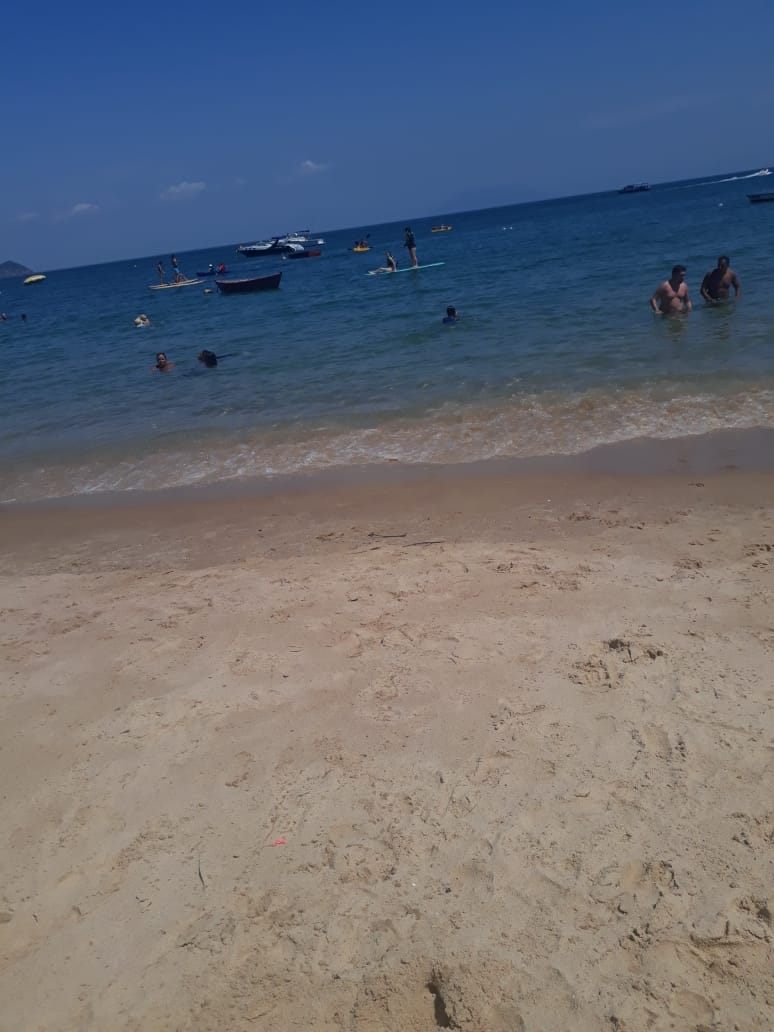A profile of visitors to Brazil Amazon Protected Areas:
Anavilhanas National Park (Amazonas) and Tapajós National Forest (Pará)
DOI:
https://doi.org/10.29149/mtr.v4i1.5061Palavras-chave:
Monitoramento da visitação, perfil, Uso público, Unidades de Conservação.Resumo
O propósito deste estudo foi desenvolver um perfil de visitantes em dois locais turísticos e unidades de conservação na Bacia Amazônica brasileira: Floresta Nacional do Tapajós (Pará) e Parque Nacional de Anavilhanas (Amazonas). Uma pesquisa in loco foi feita nas duas áreas. O total de questionários utilizados nesta análise foi de 2512 (1255 em Tapajós e 1257 em Anavilhanas). Os dados coletados oferecem uma fonte importante de informações para os gestores das áreas protegidas, para que eles possam entender melhor as necessidades recreativas e a capacidade atual de uso em ambas as áreas protegidas. Um dos objetivos deste estudo foi reunir dados para entender o fluxo atual de visitantes na Amazônia, enfocando suas características específicas. Esse tipo de informação é crucial para a gestão do uso público e o desenvolvimento do turismo em áreas protegidas. A equipe do projeto é grata ao Serviço Florestal dos EUA - Programas Internacionais (USFS - IP), Agência dos EUA para o Desenvolvimento Internacional (USAID) e ao Instituto Nacional de Alimentos e Agricultura (NIFA) do USDA que tornaram este estudo possível. Os autores também agradecem ao Instituto Chico Mendes (ICMBio), à Floresta Nacional do Tapajós, à equipe do Parque Nacional de Anavilhanas e aos membros da comunidade local que coletaram dados e apoiaram esta pesquisa.
Referências
Alves, L.C.P S.; Machado, C.J.S.; Vilani R.M.; Vidal, M.D.; Andriolo, A. & Azevedo, A. F. (2013). As atividades turísticas baseadas na alimentação artificial de botos-da-Amazônia (Inia geoffrensis) e a legislação ambiental brasileira. Desenvolvimento e Meio Ambiente, v. 28, n. 2, p.89-106.
Berg, B. & Lune, H. (2004). Qualitative research methods for the social sciences. Pearson: Boston.
Burns, R.C. & Graefe, A. (2007). Constraints to outdoor recreation in Pacific Northwest national forests: Exploring perceptions of respondents whose households include persons with disabilities. Journal of Leisure Research, 39(1), 156-181.
Burns, R.C. & Robinson, K. (2017). Oregon’s aging population: Relationships between facilities, services, participation, and socio-demographics in outdoor recreation settings. Journal of Park and Recreation Administration 35(4), 13-23.
Boza, M. (1993). Conservation in Action: Past, Present, and Future of the National Park System of Costa Rica. Conservation Biology, 7 (2), 239-247.
Lei n. 9.985, de 18 de julho de 2000 (2000). Regulamenta o art. 225, § 1o, incisos I, II, III e VII da Constituição Federal, institui o Sistema Nacional de Unidades de Conservação da Natureza e dá outras providências. Brasília, DF. Recuperado em 24 novembro, 2016, de http://www.mma.gov.br/estruturas/sbf_corredores/_arquivos/snuc.pdf.
Burns, R.C. & Moreira. J. C. (2013). Visitor management in Brazil’s protected areas: Benchmarking for best practice in resource management. The George Wright Forum, 30, 163-170.
Burns, R.C. & Moreira. J. C. (2017). Anavilhanas National Park Recreation Survey. Final Report, Submitted to USDA Forest Service: Washington.
Castro, E. V.; Souza T. B. & Thapa, B. (2015). Determinants of tourism attractiveness in the National Parks of Brazil. Parks, 21 (2), 51-62.
Constituição da República Federativa do Brasil de 1988. (1988). Brasília. Recuperado em 10 out. 2017, de http://www2.camara.leg.br/legin/fed/consti/1988/constituicao-1988-5-outubro-1988-322142-publicacaooriginal-1-pl.html
Drummond, J. A. L. (2016). From Randomness to Planning: the 1979 Plan for Brazilian National Parks. In: Fiege, M; Jared, O & Hawkins, A. (Org.). National Parks beyond the Nation: 'Global Perspectives on 'America's Best Idea'. Oklahoma (EUA): University of Oklahoma Press, p. 210-234.
Eagles, P. (2016). Foreword. In: Mccool, S & Bosak, K. (Org.). Reframing Sustainable Tourism. New York: Springer Publishing, p.5-7.
Garcia, L. V. M. (2015). Cachoeira da Mariquinha: Impactos e potencialidades do uso público no Parque Nacional dos Campos Gerais – PR. Dissertação (Mestrado em Gestão do Território), Universidade Estadual de Ponta Grossa, Ponta Grossa.
ICMBio. (2016). Aumenta número de visitantes em Unidade de Conservação. Available at <http://www.icmbio.gov.br/portal/ultimas-noticias/4-destaques/7579-numero-de-visitantes-nas-ucs-federais-aumenta-320 >. Acessed in: 05th feb. 2018.
ICMBio (2018). Mais de 1,7 milhão de pessoas visitaram o Parque do Iguaçu. Retrieved from <http://www.icmbio.gov.br/portal/ultimas-noticias/20-geral/9389-mais-de-1-7-milhao-de-pessoas-visitaram-o-parque-do-iguacu >. Acessed in: 25 feb. 2018.
Jamal, T.B. & Getz, D. (1995). Collaboration theory and community tourism planning. Annals of Tourism Research, 22 (1), 186-204.
Jesus, V. R. (2010). Developing sustainable tourism in the Amazon rainforest of Brazil – premises, actions, challenges. Worldwide Hospitality and Tourism Themes, 2 (2),144-152.
Joppe, M. (1996). Sustainable community tourism development revisited. Tourism Management. 17 (7): 475-479.
Kinker, S. (2002). Ecoturismo e conservação da natureza em parques nacionais. São Paulo: Papirus.
Lew, A. A. & McKercher, B. (2002). Trip Destinations, Gateways and Itineraries: The Example of Hong Kong. Tourism Management, 23 (6), 609-621.
Marion, J. L. & Farrell, T. A. (2002). Management practices that concentrate visitor activities: camping impact management at Isle Royale National Park, USA. Journal of Environmental Management, 66(2), 201-212.
Medeiros, R. (2006). Evolução das tipologias e categorias de áreas protegidas no Brasil. Ambiente & Sociedade, 9 (1), 41-63.
Ministério do Meio Ambiente. (2018). Cadastro Nacional de Unidades de Conservação. Retrieved from < http://www.mma.gov.br/images/arquivo/80112/CNUC_JUL17%20-%20C_Bio.pdf >. Acessed in: 31 jan. 2018.
Pádua, M. T. J. (1978).Categorias de Unidades de Conservação – Objetivos de Manejo. Boletim FBCN, 13, 78-84.
Peres, C. A. & Terborgh, J. W. (1995). Las Reservas Naturales Amazónicas: un análisis del estado relativo de protección de las unidades de conservación existentes y del criterio de diseño para el future. Conservation Biology 9(1), 34-46.
Pimentel, D. S. & Magro, T. C. (2011). Múltiplos olhares, muitas imagens o manejo de parques com base na complexidade social. GEOgrafia (UFF), 13 (26), 92-113.
Rodrigues de Jesus, V. (2010). Developing sustainable tourism in the Amazon rainforest of Brazil – premises, actions, challenges. Worldwide Hospitality and Tourism Themes, 2, 144-152. doi:10.1108/17554211011037831
Romagnoli, F. C. (2009). Interpretação ambiental e envolvimento comunitário: ecoturismo como ferramenta para a preservação do boto-vermelho, Inia geoffrensis. Dissertação (Mestrado), Instituto Nacional de Pesquisas da Amazônia, Manaus.
Santos, G. E.; Ramos, V. & Rey-Maquieira J. (2014). Length of stay at multiple destinations of tourism trips in Brazil. Journal of travel Research, 54 (6), 788-800.
Serviço Florestal Brasileiro. (2013). Florestas do Brasil em resumo - 2013: dados de 2007-2012. Serviço Florestal Brasileiro: Brasília.
Souza, T. B. (2016). Recreation classification, tourism demand and economic impacts analyses of the federal protected areas in Brazil. Tese (Doutorado), University of Florida, Gainesville.
Tanner, J. B.; Thomas, P.; Sills, E. O. & Silva, S.S. (2017). The potential demand for ecotourism in the Tapajós National Forest, Pará, Brazil, 1997. FPEI Working Paper, 62, 1-54.
Tiefenbacher, J. P.; Day, F. A. & Walton, J. A. (2000). Attributes of repeat visitors to small tourist-oriented communities. The Social Science Journal, 37 (2), 299-308.
Van Niekerk, M. (2014). Advocating community participation and integrated tourism development planning in local destinations: The case of South Africa. Journal of Destination Marketing and Management, 3 (2), 82-84.
Vidal, M. D.; Santos, P.M.C.; Jesus, J. S.; Alves, L.C.P.S. & Chaves, M.P.S.R.; (2017). Ordenamento participativo do turismo com botos no Parque Nacional de Anavilhanas, Amazonas, Brasil. Boletim Museu Paraense Emilio Goeldi, 12(1), 23-36.
White, R. (1985). American Environmental History: The Development of a New Historical Field. Available at <http://www.jstor.org/stable/3639634?seq=1&cid=pdf-reference#fndtn-references_tab_contents >. Acessed in 24 feb. 2018.
Downloads
Publicado
Como Citar
Edição
Seção
Licença
Autores que publicam nesta revista concordam com os seguintes termos:
- Autores mantém os direitos autorais e concedem à revista, sem ônus para a mesma, o direito de primeira publicação, com o trabalho simultaneamente licenciado sob a Licença Creative Commons Attribution que permite o compartilhamento do trabalho com reconhecimento da autoria e publicação inicial nesta revista
- Autores têm autorização para assumir contratos adicionais separadamente, para distribuição não-exclusiva da versão do trabalho publicada nesta revista (ex.: publicar em repositório institucional ou como capítulo de livro), com reconhecimento de autoria e publicação inicial nesta revista.
- Autores assumem exclusiva responsabilidade pelas suas opiniões emitidas nos trabalhos publicados nesta revista
















